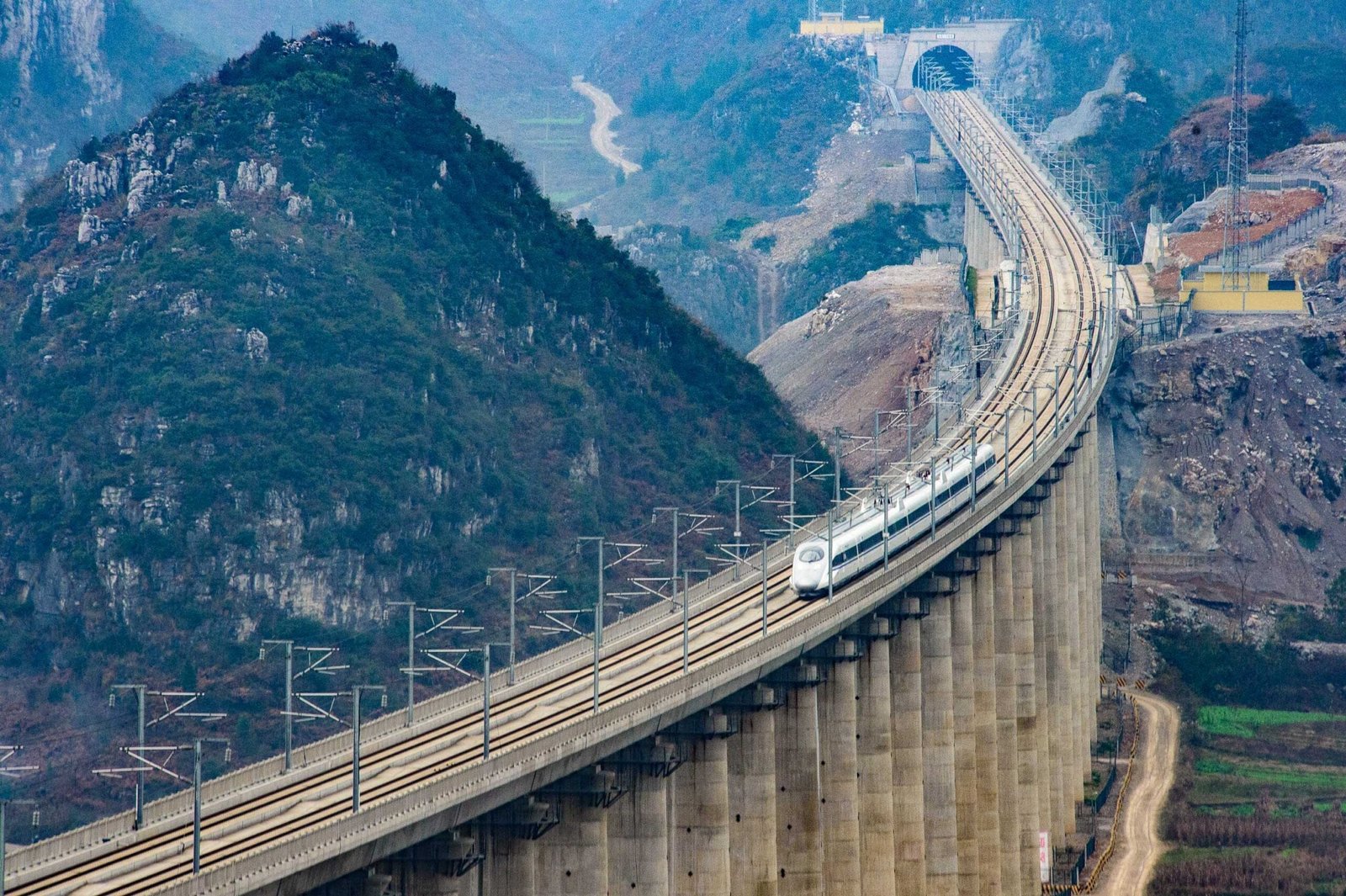Embark on an unforgettable journey along the Sichuan-Tibet Highway, a route that promises an adventure like no other. Originally known as the Kangding Tibet Highway and part of the renowned No. 318 National Trunk Highway, this road offers a passage through some of the most breathtaking landscapes in China.
The Sichuan-Tibet Highway, one of China’s earliest and most famous roads, is also celebrated as one of the world’s most beautiful highways. Revered as a picturesque journey in China, it splits into two main routes: the South Line and the North Line, each offering a unique passage through breathtaking landscapes.
A Scenic Route of Contrast and Beauty
Majestic Landscapes and Local Culture
As you travel along this highway, you’ll be greeted with vast open landscapes where majestic peaks reach for the skies. The plateau areas are adorned with unique Tibetan homes, resembling castles, and you’ll witness countless yaks grazing contentedly. This route is not just a journey through nature but also an exploration of the rich Tibetan culture.
A Journey Through Nature and Culture
The Sichuan-Tibet Highway is more than just a road; it’s a pilgrimage through the soul of China. Along this route, travellers encounter towering snow-capped mountains, serene lakes, endless grasslands, and regions inhabited by diverse ethnic communities. The highway offers a feast for the eyes, from the natural beauty to the rich cultural heritage.
Iconic Landmarks along the Way
- Mount Gongga: Known as the King of Sichuan Mountains.
- Mount Namchak Barwa: Celebrated as the most beautiful snow mountain in China.
- Zi Zhu Monastery: Located in Linzhi, known for its beautiful scenery, often likened to the Jiangnan of Tibet.
- Derge Printing House: Established in 1792, it’s the only manual scripture printing house in the world.
- Yarchen Gar Monastery: Famous for its serene environment where chants and prayers echo at dawn and dusk.

Diverse Climate: A Nature’s Kaleidoscope
The Sichuan-Tibet Highway is a marvel of changing sceneries. From the warmth of spring to the chilly embrace of winter, every turn brings a new climate and an intoxicating view. It’s a place where time seems to warp – what feels like days in heaven might just be moments on Earth.
Travel at Your Own Pace
The Ideal 15-Day Getaway
If you’re not in a hurry, the ideal journey on the Sichuan-Tibet Highway spans approximately 15 days. This timeframe allows you to fully immerse yourself in the ever-changing landscapes and the unique cultural tapestry of the region.
A Test of Driving Skills
The highway is also known for its challenging driving conditions. Bad driving surfaces and sharp mountain-side hairpins make it a test for even the most experienced drivers. Driving along single-track sections in bad weather adds to the adventure, making it a thrilling experience for those who dare.
The Two Routes of the Sichuan-Tibet Highway
South Line: A Path Through Diverse Regions
The South Line of the Sichuan-Tibet Highway connects the dots between Ya’an, Kangding, and Tongolo in Sichuan Province, stretching to Mangkang, Zuogong, and Nyingchi in the Tibet Autonomous Region, before culminating in Lhasa. Each of these locations boasts its unique charm and contributes to the richness of the journey.
A Road Trip of a Lifetime
The Sichuan-Tibet Highway isn’t just a road; it’s a journey through diverse landscapes, rich cultures, and challenging terrains. It promises an experience that’s as rewarding as it is challenging, making it a must-do for any adventurous traveller. Whether you’re seeking natural beauty, cultural immersion, or a driving challenge, this highway offers it all.

An Overview of the Sichuan-Tibet Highway’s South and North Lines
The Sichuan-Tibet Highway, a marvel of engineering and natural splendour, is divided into two distinct routes: the South Line and the North Line. Each offers a unique journey through China’s diverse landscapes, from the bustling cityscapes to the serene vistas of Tibet.
The South Line: A Journey Across 2,115 Kilometers
From Shanghai to the Nepal Border
The South Line of the Sichuan-Tibet Highway, extending 2,115 kilometres, forms a part of the renowned No. 318 State Highway. This impressive route begins at the Shanghai Hongqiao International Airport in the east and stretches to the Zhangmu Port, a key location on the China-Nepal Highway in the Tibet Autonomous Region.
The journey takes you from Chengdu through Ya’an, Kangding, Litang, and Batang, entering Tibet via Mangkang, and passing through Baxoi, Bomi, and Nyingchi to Lhasa. This route crosses several high mountain passes over 4,000 meters and spans across major rivers like the Dadu River, Jinsha River, Nu River, and Lancang River, making it a challenging yet awe-inspiring journey.
The North Line: A Longer Path to Lhasa
Sichuan Tibet Highway North Line is slightly longer at 2,414 kilometres. North Line of the Sichuan Tibet Highway starts from Chengdu and passes through Xiaojin, Danba, Bamei, Dawu, Luhuo, Seda, Ganzi, Nima Ganggo, Dege, Jiangda, Changdu, Lhorong, Dingqing, Baqing, Suoxian, Naqu, Damxung, and finally to Lhasa. This route is known for its complex road conditions and relatively underdeveloped infrastructure compared to the South Line.
Historical Significance and Construction
Linking Chengdu and Lhasa since 1950
The construction of the Sichuan-Tibet Highway began in April 1950, marking a significant milestone as the first highway to connect Chengdu in Sichuan Province with Lhasa in the Tibet Autonomous Region. This highway is not just a testament to human ingenuity but also a symbol of the cultural and economic linkage between diverse regions.
The Dual Veins of Connection
The Sichuan-Tibet Highway, with its South and North Lines, represents more than just a transportation network. It’s a journey through China’s heartland, offering an unparalleled experience of the country’s varied landscapes and rich cultural tapestry. Whether you seek the thrill of a road trip or the tranquillity of scenic vistas, these routes provide a gateway to some of the most captivating experiences in China.





















